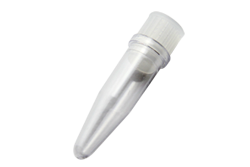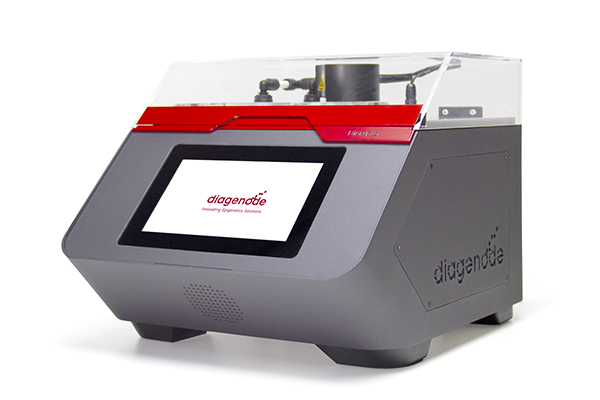How to properly cite our product/service in your work We strongly recommend using this: 1.5 ml Picoruptor Microtubes with Caps (Hologic Diagenode Cat# C30010016). Click here to copy to clipboard. Using our products or services in your publication? Let us know! |
CREBBP/EP300 acetyltransferase inhibition disrupts FOXA1-bound enhancers to inhibit the proliferation of ER+ breast cancer cells.
Bommi-Reddy A. et al.
Therapeutic targeting of the estrogen receptor (ER) is a clinically validated approach for estrogen receptor positive breast cancer (ER+ BC), but sustained response is limited by acquired resistance. Targeting the transcriptional coactivators required for estrogen receptor activity represents an alternative approach... |
Exploring the virulence gene interactome with CRISPR/dCas9 in the humanmalaria parasite.
Bryant, JM and Baumgarten, S and Dingli, F and Loew, D and Sinha, A andClaës, A and Preiser, PR and Dedon, PC and Scherf, A
Mutually exclusive expression of the var multigene family is key to immune evasion and pathogenesis in Plasmodium falciparum, but few factors have been shown to play a direct role. We adapted a CRISPR-based proteomics approach to identify novel factors associated with var genes in their natural chromatin context. Ca... |
Proteomics Links Ubiquitin Chain Topology Change to Transcription Factor Activation.
Li Y, Dammer EB, Gao Y, Lan Q, Villamil MA, Duong DM, Zhang C, Ping L, Lauinger L, Flick K, Xu Z, Wei W, Xing X, Chang L, Jin J, Hong X, Zhu Y, Wu J, Deng Z, He F, Kaiser P, Xu P
A surprising complexity of ubiquitin signaling has emerged with identification of different ubiquitin chain topologies. However, mechanisms of how the diverse ubiquitin codes control biological processes remain poorly understood. Here, we use quantitative whole-proteome mass spectrometry to identify yeast proteins t... |
The role of TCF3 as potential master regulator in blastemal Wilms tumors.
Kehl T, Schneider L, Kattler K, Stöckel D, Wegert J, Gerstner N, Ludwig N, Distler U, Tenzer S, Gessler M, Walter J, Keller A, Graf N, Meese E, Lenhof HP
Wilms tumors are the most common type of pediatric kidney tumors. While the overall prognosis for patients is favorable, especially tumors that exhibit a blastemal subtype after preoperative chemotherapy have a poor prognosis. For an improved risk assessment and therapy stratification, it is essential to identify th... |
Transcriptome-wide dynamics of extensive m6A mRNA methylation during Plasmodium falciparum blood-stage development
Sebastian Baumgarten, Jessica M. Bryant, Ameya Sinha, Thibaud Reyser, Peter R. Preiser, Peter C. Dedon, Artur Scherf
Malaria pathogenesis results from the asexual replication of Plasmodium falciparum within human red blood cells, which relies on a precisely timed cascade of gene expression over a 48-hour life cycle. Although substantial post-transcriptional regulation of this hardwired program has been observed, it remains unclear... |
Dot1 promotes H2B ubiquitination by a methyltransferase-independent mechanism.
van Welsem T, Korthout T, Ekkebus R, Morais D, Molenaar TM, van Harten K, Poramba-Liyanage DW, Sun SM, Lenstra TL, Srivas R, Ideker T, Holstege FCP, van Attikum H, El Oualid F, Ovaa H, Stulemeijer IJE, Vlaming H, van Leeuwen F
The histone methyltransferase Dot1 is conserved from yeast to human and methylates lysine 79 of histone H3 (H3K79) on the core of the nucleosome. H3K79 methylation by Dot1 affects gene expression and the response to DNA damage, and is enhanced by monoubiquitination of the C-terminus of histone H2B (H2Bub1). To gain ... |
BET protein inhibition sensitizes glioblastoma cells to temozolomidetreatment by attenuating MGMT expression
Tancredi A. et al.
Bromodomain and extra-terminal tail (BET) proteins have been identified as potential epigenetic targets in cancer, including glioblastoma. These epigenetic modifiers link the histone code to gene transcription that can be disrupted with small molecule BET inhibitors (BETi). With the aim of developing rational combin... |



